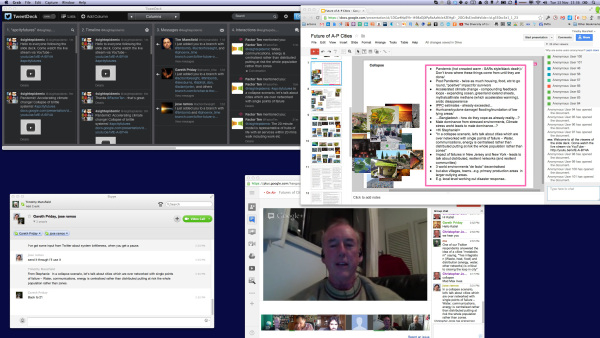The ‘foresight epidemic’ was a project done as part of research with the Smart Services CRC, to investigate the extent to which contemporary social media can be harnesses as platforms for developing public foresight.
We used a variety of futures studies methods to explore topics chosen by interest from the public. Topics included:
· The futures of citizen insurgencies
· The futures of work
· The futures of childhood education
· The future of cities in the Asia Pacific
With each topic we employed a new futures method that we twined with a new social media strategy. We followed an action research strategy of 1) designing a new foresight approach, 2) running it as an experiment in engagement, 3) evaluating how it went. We also employed triple loop learning theory to test our team assumptions with regard to the ‘why’ of the activity (purpose), the strategies we considered best and the tactical and operational dimensions of what we were doing.
Critical insights from the action learning experiment included:
· The power of images in facilitating people’s engagement and ability to mash-up scenarios
· The importance of distributed and embodied ‘co-presence’ – even while not physically present, sensory engagement is still fundamental
· The potential for twining physical and virtual interactions is real but requires design and intelligent implementation
· Smaller groups engaging in coherent and high quality conversations about the future is preferable to large scale groups with less coherence – there is a trade off with the scale and network capacity of social media.

